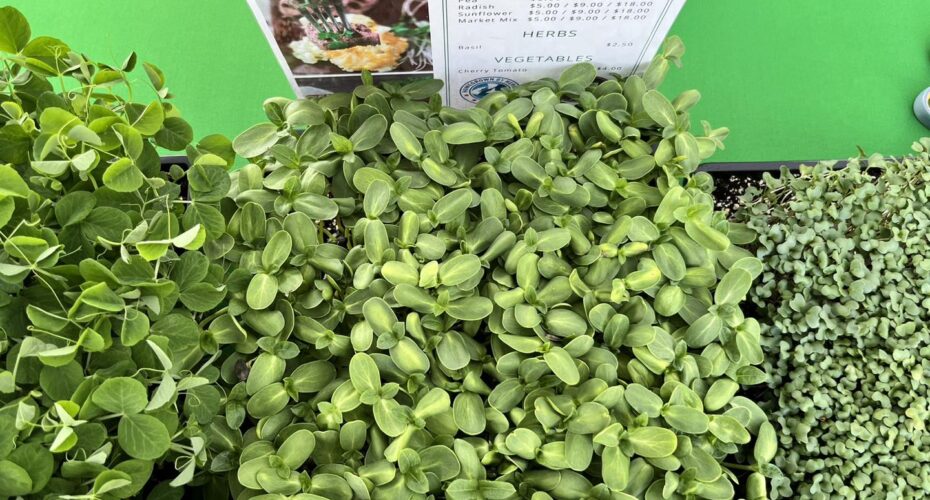My First Season At a Farmer's Market
September 23rd was my last market this year. Growing up, I was at the farmer’s market all the time, so this isn’t technically my “first season,” but I was actually running a booth of my own this time instead of just working one.
After attending markets for the past 6 months, I wanted to share some thoughts and takeaways that I gained in the process.
1) Try a farmer’s market if you’re just starting
I figured the easiest route to selling my basil, lettuce, and microgreens was through one of the local farmer’s markets and, after having done that, I think it was a good choice. The market has a low barrier to entry, is a great way to get some experience, allows you to meet potential customers, and is relatively forgiving if you make a mistake here or there.
2) Take time to research and choose the right market
In some places, there may only be a single market. If that’s the case, you don’t have much choice. Other times however, such as in my case, there were several markets to choose from:
- Greater Springfield Farmer’s Market
- Farmer’s Market of the Ozarks
- C-Street City Market
- Willard Community Market
- Ash Grove Farmer’s Market
- Republic Farmer’s Market
- Fair Grove Farmer’s Market
- Ozark Farmer’s Market
Small side note – I don’t know the history and story here, but I’m not entirely sure why there are so many different markets in the area. I feel like it would better serve vendors and customers to have a single large market that’s open all the time, rather than have a dozen small markets that all operate on a different schedule, scattered across the area. Let me know your thoughts in the comments!
3) Make sure your display is secure
With a lot of smaller markets, taking part means setting up a tent / canopy and folding tables. There were several times where wind started to blow people’s tents away or knocked their displays over. One vendor had some of their crafted items break in the process, and there were a number of times that my basil clamshells would fall onto the floor – it doesn’t take much to blow away 3/4 of an ounce!
4) Do a dry-run of your setup
At the markets I attended , there was a specific time frame when you were allowed to setup and be ready to sell. Doing a dry run of your setup helps figure out how early you need to arrive and still complete setup on time.
5) Spend some extra time on your display
Your display is one of the most important things about your stand. Be sure to have all of your items visible and attractive. If your goods can’t be seen or the signs aren’t attractive, you’re more likely to be passed over. That being said, don’t wait until they’re perfect to get started – you can always improve as you go.
6) Have a checklist for market days
When the market is 15-20 minutes away from your house (or more), the last thing you want to do is get there only to realize you forgot something. Luckily, I only had this happen once, but I’ve seen it happen to others as well. I think the easiest remedy is to have a checklist with all of your equipment or near your vehicle that you can run through every morning prior to leaving.
7) Don’t be afraid to experiment
As mentioned earlier, farmer’s markets are fairly forgiving to those starting out. Play around with your packaging, setup, signage, whatever. As you gain more experience, you’ll start to get a feel for what works and what doesn’t. I probably went through five or six iterations of how my stand was setup throughout the season. I also went through two or three different labels until I found one that I liked.








